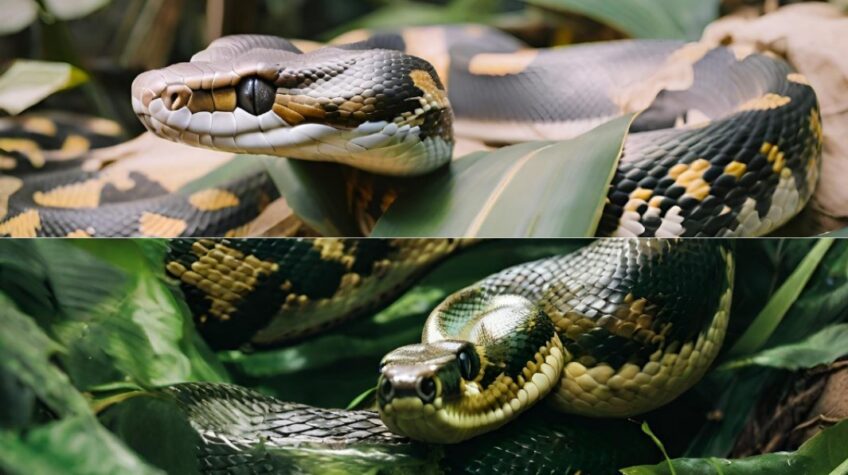Anacondas and pythons are both large and powerful snakes, but they are not the same. They belong to different families and inhabit different parts of the world. They also have distinct features and behaviors that make them unique. In this article, you will discover how to tell apart these amazing reptiles and what makes them so interesting.
What Are the Key Differences?
Pythons and anacondas are often mentioned in the same breath due to their massive size and power. However, despite their similarities, these two types of snakes are distinctly different in many ways.
Habitat and Distribution
Anacondas and pythons, while sharing the commonality of being among the largest snakes in the world, exhibit distinct differences in their habitats and geographical distribution. Anacondas are predominantly found in South America, with a significant presence in the Amazon basin. Their habitat is primarily aquatic, thriving in environments like marshes, swamps, and rivers.
This preference for water is integral to their lifestyle, influencing their hunting methods, mating behaviors, and general survival strategies. The green anaconda, in particular, is adept at navigating these wet environments, utilizing the dense vegetation and murky waters to camouflage and hunt. On the other hand, pythons inhabit a more varied range of environments.
Their distribution spans across continents, being found in Asia, Africa, and Australia. This wide geographical spread leads to a diverse array of habitats, including rainforests, grasslands, savannas, woodlands, swamps, and even arid deserts. Such adaptability showcases the python’s versatile survival capabilities.
Different python species have evolved to thrive in specific environments, with each habitat influencing their physical characteristics, diet, and behavior. For instance, the African rock python is well-suited to the savannas and grasslands of sub-Saharan Africa, while the reticulated python is commonly found in the rainforests of Southeast Asia.
Physical Characteristics
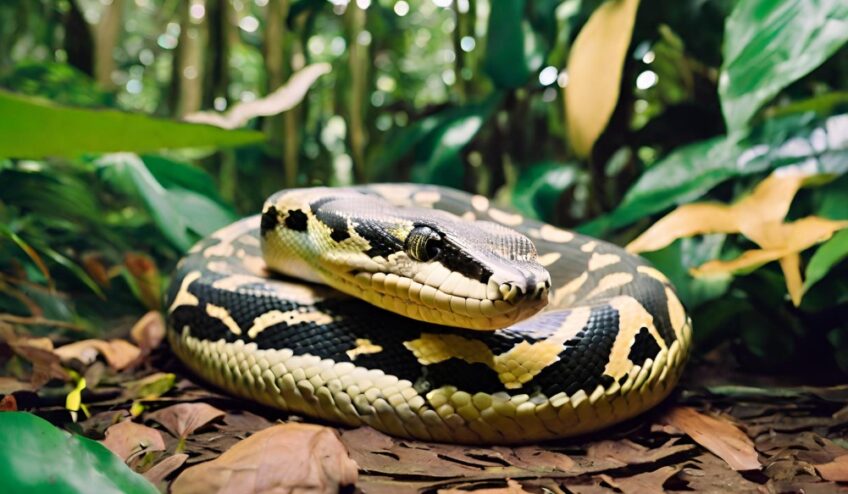
The physical attributes of anacondas and pythons further underscore their differences. Anacondas, particularly the green anaconda, are recognized as the heaviest snakes in the world. They can weigh up to 550 pounds and reach lengths of up to 30 feet. This sheer size and bulk make them formidable predators in their aquatic realms.
Their bodies are designed for power rather than speed, with muscular girth that aids in their constriction method of hunting. Despite their mass, anacondas are capable of moving with surprising agility in water, a trait that is essential for capturing prey and evading threats. In contrast, pythons, while not as heavy, can attain greater lengths.
The reticulated python, for example, is known to exceed 33 feet, making it one of the longest snakes. This length provides pythons with a significant reach advantage, crucial in their hunting strategy. Pythons tend to have a more streamlined body compared to the bulky anaconda, allowing for greater flexibility and agility, particularly in arboreal environments.
This difference in build reflects their respective adaptations to their environments – anacondas being optimized for aquatic life and pythons for a more terrestrial existence.
Feeding Habits and Diet
Feeding habits and diet are another area where anacondas and pythons diverge significantly. Both species employ constriction to subdue their prey, a method that involves wrapping their powerful bodies around the victim and applying lethal pressure. However, their choice of prey and hunting techniques vary greatly due to their different habitats and physical capabilities.
Pythons typically prey on mammals and birds. Their diet can include small to medium-sized animals, such as rodents, monkeys, and even deer in the case of larger species like the Burmese python. The hunting method of pythons often involves ambushing from a concealed position, using their camouflage to remain hidden until the opportune moment to strike.
Their ability to unhinge their jaws enables them to consume prey significantly larger than their head, an essential adaptation for a predator that may go weeks or months between meals. Anacondas, with their aquatic lifestyle, have a more diverse diet. They are opportunistic feeders, consuming a wide range of prey including fish, other snakes, reptiles, capybaras, and occasionally larger prey like wild pigs or caimans.
The green anaconda, in particular, is known for its ability to take down large, formidable prey. Their hunting strategy often involves lying in wait under the water, with only their eyes and nostrils above the surface. This ambush method, coupled with their aquatic agility, makes them successful predators in their environment.
Lifespan and Reproduction
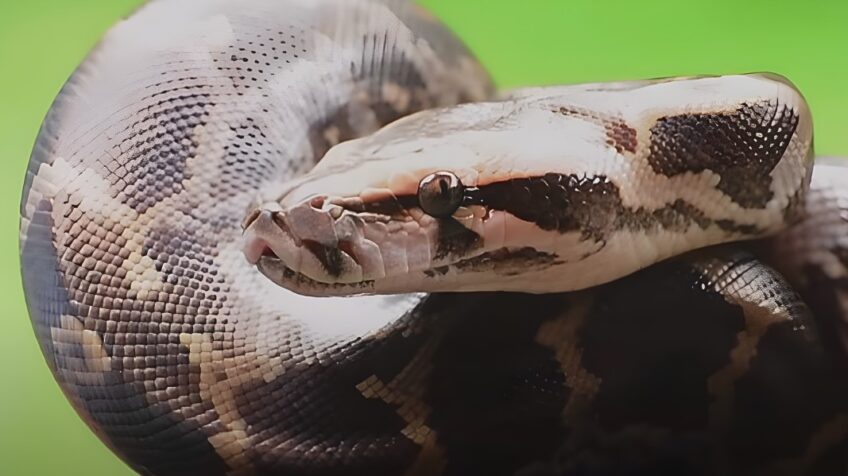
The lifespan and reproductive strategies of anacondas and pythons also exhibit notable differences. Anacondas generally have a shorter lifespan compared to pythons, living up to around 35 years. This difference can be attributed to various factors, including their habitat conditions and the physical demands of their lifestyle.
In terms of reproduction, anacondas and pythons differ fundamentally. Anacondas are viviparous, meaning they give birth to live young. This reproductive strategy is advantageous in their aquatic environments, as it eliminates the need for a safe, dry place to lay eggs. The young are born fully developed and are able to swim and hunt almost immediately, increasing their chances of survival in the predator-rich waters of their habitat.
Pythons, however, are oviparous and lay eggs. The females of some python species, such as the Burmese python, exhibit maternal care by coiling around their eggs to protect them and regulate their temperature through shivering thermogenesis. This behavior ensures the eggs are kept at an optimal temperature for development, a critical factor in environments where temperature fluctuations can be extreme.
Defensive and Offensive Capabilities
When it comes to defensive and offensive capabilities, both anacondas and pythons are equipped with remarkable adaptations. Anacondas have a significant advantage in terms of brute strength. Their squeezing force is considerably higher, around 90 PSI, compared to the python’s 14 PSI. This difference in power is a direct result of their respective hunting and living conditions.
Anacondas, needing to subdue large and often aquatic prey, require greater constriction force to ensure a successful kill. In terms of sensory organs, both species share similar capabilities. They possess heat-sensing pits that allow them to detect the body heat of their prey, an essential feature for these ambush predators.
However, anacondas have a slight edge in physical defenses due to their eye placement. Their eyes are set high on their heads, enabling them to see above the water while the rest of their body remains hidden. This adaptation is crucial for both hunting and avoiding predators.
Interesting Facts about Anacondas
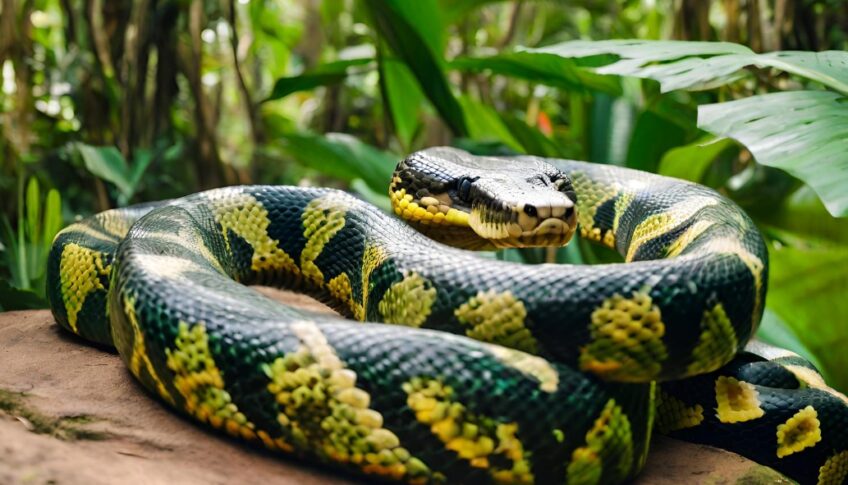
Most people are familiar only with some basic features, like that this is among the biggest reptiles, and also the most dangerous ones. We will introduce you to some specific details.
Unique Physical Appearance
Anacondas have a distinct brownish-green coloration with black spots, providing excellent camouflage in their natural habitat. Their eyes and nostrils are positioned on top of their heads, allowing them to see and breathe while the majority of their body is underwater.
Hunting Strategies
Anacondas utilize their aquatic environment to their advantage. They often bite and drown their prey, a method different from pythons, which primarily rely on constriction and crushing.
Role in Ecosystem
Anacondas play a crucial role in maintaining the ecological balance in their habitats. They control the population of their prey species and, in turn, are preyed upon by large birds of prey, leopards, and other large predators.
Conservation Status
Anacondas face threats from habitat loss and the illegal pet trade. Their skin is often sought after for clothing and accessories, contributing to a decline in their numbers in the wild.
Interesting Facts About Pythons
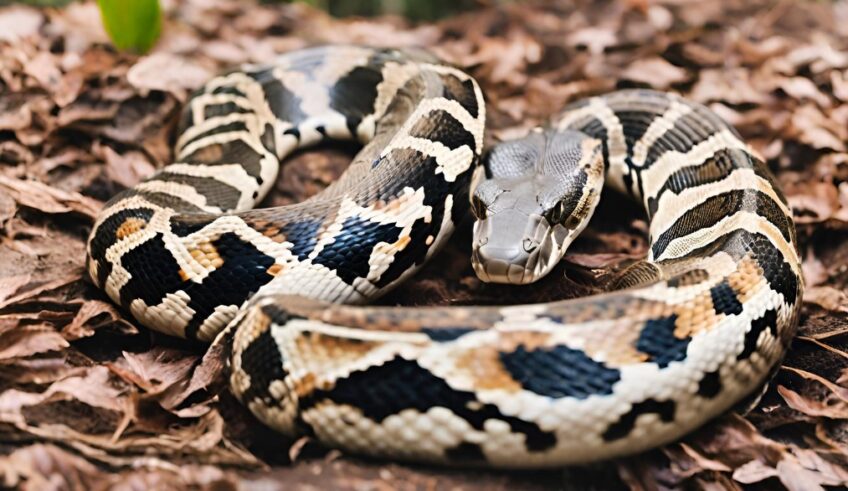
Pythons, one of the most fascinating reptile species, are known for their impressive size and strength. Here are some intriguing facts about these magnificent snakes.
Wide Range of Species and Sizes
Pythons boast over 30 known species, each varying in size, color, and habitat. They range from the small Pygmy Python, which is one of the smallest snake species, to the Reticulated Python, one of the longest and heaviest snakes in the world.
They Can Adapt to Different Areas
Pythons are found in diverse environments across several continents. Their habitats include rainforests, grasslands, savannas, woodlands, swamps, and even deserts. This adaptability is a testament to their resilience and evolutionary success.
Constriction as a Hunting Method
Pythons are renowned for their method of killing prey through constriction. They wrap their powerful bodies around their prey, tightening their grip with each breath the prey takes, eventually leading to suffocation.
Jaw Adaptation for Feeding
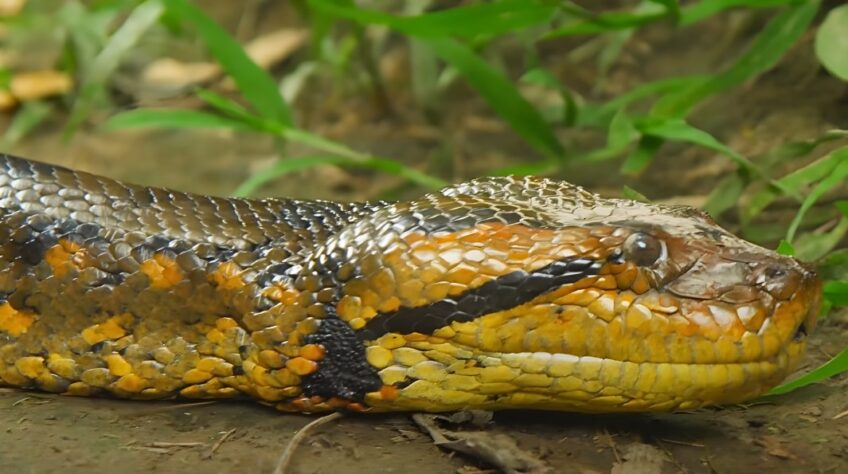
One of the most extraordinary features of pythons is their ability to unhinge their jaws, enabling them to swallow prey much larger than their head. This adaptation is crucial for their survival, as it allows them to consume large meals that can sustain them for extended periods.
Sensory Capabilities
Pythons have heat-sensing pits along their jaws, allowing them to detect warm-blooded prey even in complete darkness. This makes them formidable nocturnal hunters.
Threats from Human Activity
Despite their formidable presence, pythons face significant threats from human activities. Habitat destruction and the illegal skin trade are major concerns. Python skin is highly valued in fashion, leading to overhunting and population declines in some areas.
Role in Ecosystems
In their natural habitats, pythons play a crucial role in maintaining the balance of the ecosystem. As predators, they help control populations of their prey species, and as prey themselves, they are an important part of the food chain.
Reproduction
Python reproduction varies among species, but they generally lay eggs, which the female incubates through a process called shivering thermogenesis, generating heat to keep the eggs warm until they hatch.
Who Would Win in a Fight Between Python and Anaconda?
The outcome of a fight between an anaconda and a python is speculative and would depend on various unpredictable factors. However, examining some unique aspects of each snake can give us insights into how such a confrontation might unfold.
Tactical Advantage
Anacondas, being adept swimmers, would have a tactical advantage in aquatic environments. Their ability to stay submerged and launch surprise attacks could be pivotal. On land, however, pythons might leverage their length for strategic positioning and control.
Physical Endurance
Anacondas have a reputation for robust physical endurance, especially in prolonged confrontations. This stamina could be crucial in a battle of attrition. Pythons, although powerful, might not match the anaconda in a long, drawn-out struggle.
Bite Force
While both snakes are non-venomous and rely on constriction, the initial bite could be a deciding factor. Anacondas have a powerful bite, which, coupled with their crushing power, could inflict significant damage. Pythons, although possessing a strong bite, might not match the anaconda’s intensity.
Adaptability in Combat
The adaptability of each snake in an unfamiliar environment could also influence the outcome. If a python, typically a terrestrial snake, is taken out of its comfort zone into water, it might be at a disadvantage. Conversely, an anaconda on land might not be as dominant as it is in water.
Age and Health
The age and health of the snakes would also play a role. A younger, more agile python could potentially outmaneuver an older anaconda and vice versa. The condition of each snake at the time of the encounter could be a decisive factor.
Instinctive Behavior
It’s also important to consider the instinctive behaviors of these snakes. In the wild, both species are more inclined to avoid confrontation unless threatened or provoked. A fight to the death is not typical behavior for either species.
FAQs
Are anacondas aggressive?
Anacondas are not usually aggressive towards humans, unless they feel threatened or provoked. They are ambush predators that prefer to avoid confrontation and escape if possible.
What is the strongest snake?
The strongest snake in the world, in terms of the pressure it can exert on its prey, is the common kingsnake. It can squeeze with a force of 180 mm Hg, which is higher than the healthy blood pressure of a human.
Can an anaconda crush a human?
An anaconda can crush a human by coiling around it and cutting off the blood circulation and oxygen supply to the brain. However, this is very unlikely to happen, as anacondas rarely attack humans and usually only do so in self-defense.
Can you keep anaconda as a pet?
Anacondas can be kept as pets by experienced and well-equipped snake owners who can meet their unique needs. However, they are not suitable for beginners or casual pet lovers, as they require a lot of space, care, and respect.
Summary
While anacondas and pythons share the common trait of being large, non-venomous constrictors, they differ significantly in their habitat preferences, physical characteristics, diet, reproductive strategies, and defensive and offensive capabilities. These differences reflect their adaptation to their respective environments and lifestyles, showcasing the diversity and complexity of these fascinating reptile species.
Another interesting fact about anacondas is that they share the same habitat with other very dangerous creatures, like the Piranhas in the Amazonian River, known for hunting in groups and being dangerous for all animals, and even people.

